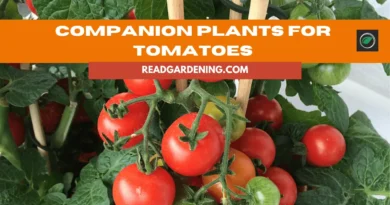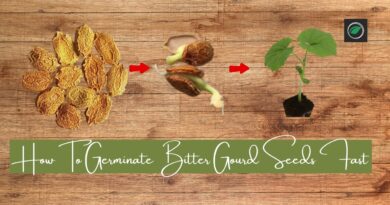Hawaii’s Lilikoi Passion Fruit Plant: Grow Your Own-2025
Lilikoi Passion Fruit Plant(Passiflora Edulis): Cultivation Tips & Growing Guide
Gardening can be an immensely satisfying hobby that brings nature, nurture plants, and witnesses their development all in the comfort of one’s own garden. There’s nothing quite so satisfying as seeing your hard work pay off in beautiful blooms or delicious fruits such as those produced by the lilikoi passion fruit plant.
Lilikoi fruit may not be as widely recognized, but its exotic taste and benefits certainly make up for that in terms of taste and benefits. Lilikoi plants make an attractive low maintenance addition for any garden looking to bring a taste of the tropics home; native to South America but widely cultivated across other areas around the globe such as Hawaii.
This blog post will give you all of the information needed to care for and grow lilikoi fruit plants successfully, from its history and cultivation tips.
Table of Contents
Origin and History
The Lilikoi Passion Fruit Plant (Passiflora edulis) is a perennial vine belonging to the Passifloraceae family that hails from Brazil, Paraguay, Uruguay, and northern Argentina. The Hawaiian word for passion fruit was Liliko’i; thus its name Lilikoi originated. First introduced into Hawaii during the 1880s due to its delicious taste it quickly gained widespread acceptance as a delicious delicacy.
What Is Lilikoi Passion Fruit Taste Like?
Liliikoi passion fruit offers a truly unforgettable and memorable taste experience, boasting an exotic combination of citrus and tropical notes with sweet and tart notes for an irresistibly delightful balance of sweet and tart. When cut open, its juicy pulp contains numerous black seeds encasing tangy freshness balanced by sweet undertones that linger long after the initial taste sensation has subsided.
Cultivation of Passionfruit
Lilikoi plants are easy to cultivate, making them an excellent addition to any garden. Although best suited to tropical climates, lilikoi can still thrive when provided with proper care and maintenance in cooler regions.
Climate
Lilikoi plants thrive best in warm and humid conditions with ample sunlight, with temperatures as low as 32°F being tolerated but will not flourish under cooler climates. Therefore, for regions experiencing winter climate conditions, it may be advantageous to grow lilikoi in greenhouse or indoor conditions.
Soil
Lilikoi passion fruit plants require well-draining soil that is rich in organic matter. Loamy or sandy soil with an acidic to neutral pH range between 6.5 to 7.5 is ideal, with proper aeration being essential to avoid stagnant water or root rot in its susceptibility to water-logging. Regular amendments of organic compost or well-rotted manure can enrich and maintain its fertility to support the lush and vibrant growth of this exotic fruit tree species.
Watering
The specific requirements for watering lilikoi plants will depend upon climate and the type of soil in which they are planted, but typically these plants require regular but infrequent irrigation; waterlogged soil poses particular challenges; when one inch of soil dries out, this necessitates watering every few days or once every week depending on where you live. In hot, dry climates this could mean daily irrigation while for plants in cooler or more humid regions once every few days may suffice.
Over-watering should be avoided to prevent root rot in lilikoi plants. Drip irrigation or soaker hose is ideal for directing the water directly to its roots without water pooling in the foliage, which could potentially cause fungal disease outbreaks. When the plant goes dormant in winter months, less frequent watering is necessary.
Keep this in mind when caring for lilikoi plants: it’s always better to water less frequently rather than too frequently; these drought-tolerant flowers respond better to periods of dryness than they do to flooding conditions.
Sunlight
Lilikoi plants thrive best under full sunlight conditions and require at least six hours of direct sunlight each day for optimal growth. The intensity of light sources impacts photosynthesis processes that affect fruit production. Supplementary lights may be utilized where sunlight levels are limited.
When grown indoors or in greenhouses, caution must be taken to avoid scorching; provide shade as necessary if direct sunlight becomes too intense to protect plants against scorching and prevent scorch marks from developing on leaves or blooms. Ultimately, creating an environment that balances plenty of sun exposure with adequate shade will result in healthy and fruitful lilikoi plants!
Planting and Propagation of Lilikoi Passion Fruit Plant
Lilikoi passion fruit plants can be propagated via seeds, cuttings, or layering; however, seed propagation produces larger and more vigorous plants.
Propagation from Seeds
To propagate lilikoi plants from seeds, collect ripe fruits and harvest their seeds into a bowl of water, where they should sit fermented for one or two days to remove any outer protective layers that remain. Rinse and dry the seeds before planting in moist potting soil covering each one with 1/4 inch. Place the pot in an indirect sunlight area at the warm temperature where seeds should germinate within 2-3 weeks.
Propagation from Cuttings
To propagate from cuttings, take 4-6 inch stem cuttings from the current season’s growth and remove their lower leaves. Dip each end of each cutting in rooting hormone powder before placing them in your potting mix. Cover them with clear plastic bags to maintain humidity levels before setting in a warm, well-lit location for two weeks with regular watering sessions to keep the soil moist and healthy.
Propagation through Layering
An efficient method for propagating the lilikoi plant through layering involves bending low-growing stems over to the ground and partially covering them with soil while still attached to their parent plant. Over time, the covered section of the stem will form roots and can then be detached from its parent plant and transplanted elsewhere.
To start layering, select a healthy and flexible stem and slightly wound the section that will be submerged. This wounding or cutting encourages rooting. Place the wounded part of the stem into the soil using wire or heavy rock, making sure that some portion of it protrudes above ground. Over the next several weeks, this buried portion will develop roots and can then be separated from its parent plant, creating an independent lilikoi plant.
Care and Maintenance of Hawaii Lilikoi Fruit (Passiflora)
Achieving long-term success when cultivating lilikoi passion fruit plants relies heavily on consistent care and maintenance measures, including regular pruning, fertilization, and pest control measures.
Pruning
Pruning is essential to maintain the size and shape of a lilikoi plant as well as promoting new growth, so early spring pruning should always take place prior to new growth appearing. Begin by removing dead, diseased, or damaged stems before selectively pruning back healthy stems to shape or control the size of your plant.
Pruning also increases air circulation within its structure which aids pest attack reduction as well as light penetration to reduce incidence.
Fertilizing
Lilikoi plants are heavy feeders that benefit from regular fertilization with balanced fruit tree fertilizers during their growing seasons to encourage robust growth and fruiting. Apply 4-6 weekly during this season for best results and fruitful yields.
When choosing fertilizers for lilikoi plants, it’s essential that they support both their growth and fruit production. A slow-release granular fertilizer with an NPK ratio such as 10-10-10 or 14-14-14 could be ideal.
Lilikoi plants require not only macronutrients, such as calcium and magnesium, but also micronutrients like calcium magnesium, and iron to flourish properly. A fertilizer tailored specifically for fruit-bearing plants that contain these micronutrients could be an invaluable asset.
Supplementing soil fertility by adding organic compost, well-rotted manure or worm castings can further boost soil fertility by adding vital nutrients as well as improving the structure and water-holding capacities of the soil.
Remember, over-fertilization can be just as harmful to plants as under-fertilizing, so always follow the manufacturer’s recommendations regarding dosage and frequency.
Pest Control
Some common pests that could impact the Lilikoi plant include aphids, passion vine hoppers, and caterpillars. By regularly inspecting your plant you can prevent infestations from becoming severe; insecticidal soaps or neem oil are effective solutions while for larger insects like caterpillars, handpicking may work as well.
As well as pests and diseases such as Fusarium wilt, brown spot, and passion fruit woodiness virus. Once signs of these pests or viruses have been observed on lilikoi plants, immediate action should be taken to limit damage and spread.
Begin with non-chemical methods, like washing the plant with a strong stream of water to dislodge pests or handpicking larger pests like caterpillars. If these methods fail, try organic insecticides like neem oil or insecticidal soap sprayed directly onto affected areas; just follow manufacturer instructions carefully in order to protect the plant from harm.
Common Cultivation Challenges Passion Fruit Vine
Planting Lilikoi passion fruit plants is an enjoyable experience; however, some challenges may arise during cultivation. These include:
Pollination Issues:
To produce fruit, Lilikoi flowers require pollination by insects in order to produce blossoms; this means hand pollination may be required when growing indoors or in environments without many pollinators; in such cases, hand-pollination might also be necessary in such circumstances.
Pest and Disease Infestations:
As previously discussed, pests and diseases can quickly damage lilikoi plants if not managed effectively.
Environmental Factors:
Lilikoi plants thrive in warm, humid climates; however, they may struggle in cooler areas. Their consistent moisture needs must be maintained; drought or overwatering could affect their growth negatively. When confronted with any of these challenges in growing your lilikoi plant don’t be discouraged.
Conclusion
Growing a Likikoi passion fruit plant can be an exhilarating experience, providing beautiful flowers and delicious fruit while adding tropical charm to any outdoor or indoor space. By following proper propagation techniques, providing regular care and maintenance, and responding quickly to any potential challenges as they arise, you can enjoy its many advantages for years to come – provided patience and attention are applied correctly!
FAQs
Q: When should lilikoi plants be pruned?
A: Pruning in early spring before new growth emerges is best practice.
Q: Which fertilizer should I use on my Lillikoi?
A: Balanced fruit tree fertilizer such as 10-10-10 or 14-14-14 will likely be most effective, along with micronutrient supplements like calcium, magnesium and iron to add an additional boost.
Q: How can I control pests on my lilikoi plant?
A: Regular inspection and use of non-chemical methods like washing your plant or handpicking pests may be sufficient for controlling them, although organic insecticides like neem oil or insecticidal soap may also be effective.
Q: Can lilikoi plants be grown indoors?
A: Lilikoi requires warm, humid environments in which to thrive best outdoors. They can still be successfully grown indoors if proper care and attention are paid to their environmental requirements.
Q: How often should I water my lilikoi plant?
A: Lilikoi plants prefer consistent moisture levels; to ensure optimal conditions in terms of climate and soil condition, provide them with some water once or twice every week depending on climate and soil type conditions. Overwatering can lead to root rot so avoid overdoing it!



